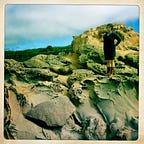Soviet Graphic Arts During the Interwar Period
A giant new book studies how the Soviet Union used the illustrated book as propaganda
It started with the promise of equal rights for all. Writers, graphic artists, designers, photographers, and the bookmakers themselves: many were renowned avant-garde creatives, and the government harnessed this talent for what ended up becoming a massive propaganda machine for the USSR’s totalitarian regime—something none of the artists could have guessed at the outset.
The Soviet Photobook 1920–1941, published in 2015 by Steidl, presents 165 different photobooks, which includes more famous volumes and lesser-known or completely unknown books, along with details from many more books. Describing the complexity and versatility of the printing and binding processes employed, editor Manfred Heiting says in the book’s introduction, “The sheer ambition behind these books was unique. It must have been a printer’s headache, not to mention a bookbinder’s nightmare, and the costs would have been staggering. No capitalist system could have afforded it!”
They introduced a way of printing that used monochromatic colors to create a mixed color palette, since the photographs being printed were all black-and-white images. They also included fun inserts in some of the books, including maps, pop-ups and fold-outs, balloons, flags, and other ephemera. Super cool! You’d never imagine we were talking about a totalitarian superpower.
In the introduction, Heiting says they chose book spreads that showed how successful the bookmakers were at “conveying an unequivocal message of dominant power.” The book covers a broad range of subjects, as did the original publications: politics, industrialization, the military, arts and letters, nature, children, and political struggles in foreign nations, to name a few.
Just a few of the creatives represented in this weighty volume, chock full of a dizzying number of images on its 600+ pages, are writers Semion Kirsanov and Vladimir Mayakovsky; artistic directors Gustav Klutsis, Valentina Kulagina, and El Lissitzky; and photographers Dmitry Debabov, Boris Ignatovich, Alexander Rodchenko, and Georgy Petrusov.
The book’s design reflects its subject matter well and includes three pages of index and an extensive glossary of those involved with the creation of or published in the books. I’ll be looking at this for years.
The Soviet Photobook 1920–1941, published by Steidl, can be purchased here. All images courtesy and © Steidl.
